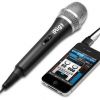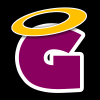
- Image via CrunchBase
Facebook unveiled its grand plan to make the the rest of the web social at its F8 developer’s conference in San Francisco held yesterday.
Facebook’s Director of Product, Bret Taylor laid out three major initiatives to that effect. Open Graph Protocol, Social Plugins, and changes to the Facebook API that will enable developers to use these services (Graph API).
“”There are two important themes behind everything we’re delivering today. First, the Web is moving to a model based on the connections between people and all the things they care about. Second, this connections-based Web is well on its way to being built and providing value to both users and developers — the underlying graph of connections just needs to be mapped in a way that makes it easy to use and interoperable.” he said.
The Social plug-ins require only one line of HTML or XFBML (Facebook markup language) tags to let publishers port Facebook’s social graph to their Website. The plug-ins include the widely reported-on Like button, which lets users share Website content they enjoyed.
More than 75 partners are launching Social Plugins of some sort today, and Zuckerberg said he expects these partners will serve more than 1 billion Like buttons.
Open Graph Protocol allows any Web page to become part of the Facebook social graph. Specifically, when a user clicks a Facebook Like button on a Website enabled by the Open Graph Protocol, the publisher will gain a link from the user’s profile, the ability to publish to the user’s News Feed, inclusion in search on Facebook and analytics.
Facebook partners for the Open Graph that feature the Like buttons will push to Facebook information about items their visitors liked—for example, bands that users liked from Pandora, local businesses such as restaurants from Yelp and movies from IMDB.com. Information about objects users click on will appear in users’ profiles as items they endorse.

















